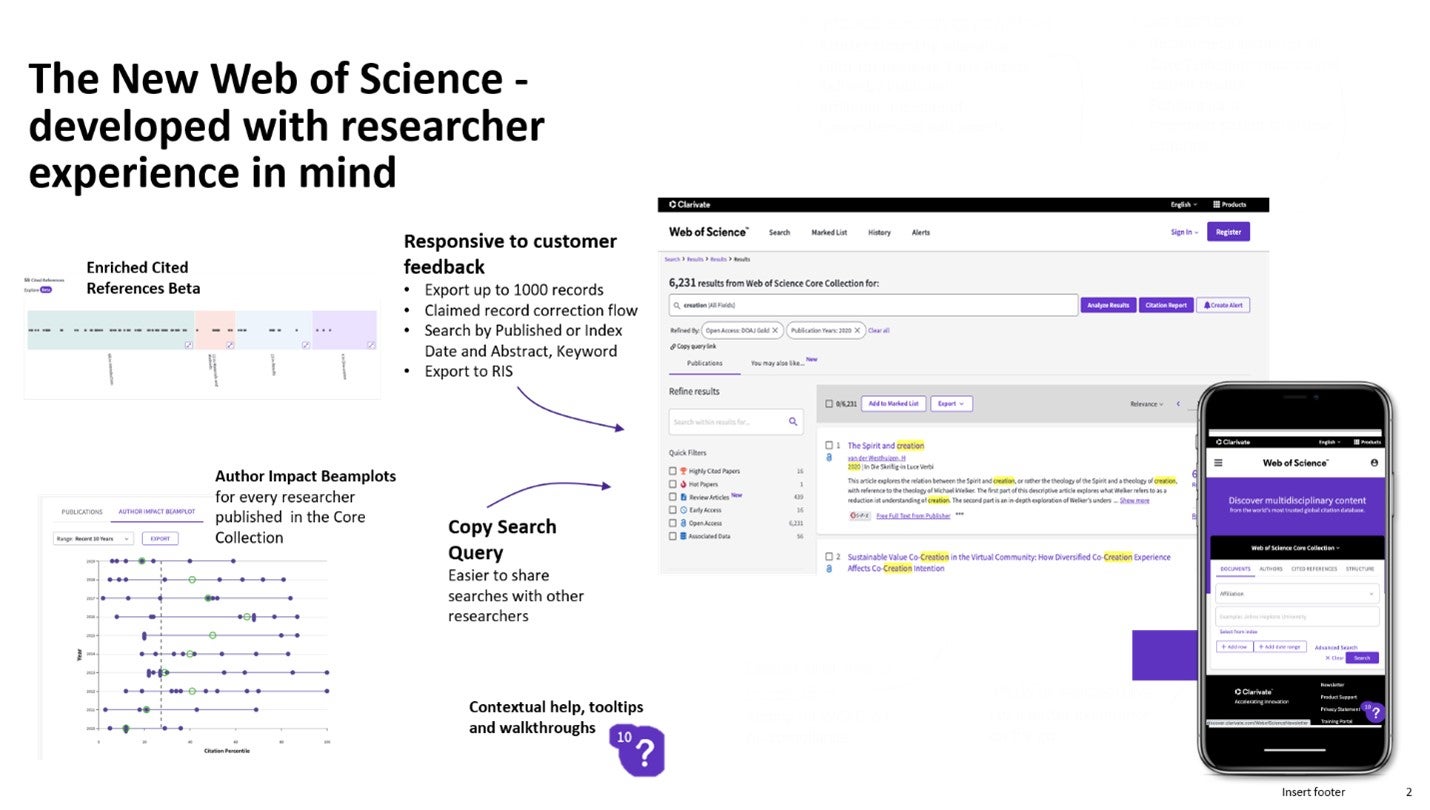All Web of Science™ customers can now see the new Web of Science as their default interface.
We are proud to share this next step in the phased migration of the Web of Science to a highly dynamic, personal and indispensable research assistant that supports your needs across your research workflows. With first access to view the new Web of Science interface, you benefit from the improved user experience that includes features and functionality only available in the new interface.

Faster, simpler, smarter
The new Web of Science interface has been available for preview and feedback from customers since November 2020. Since then, we have expanded and refined the researcher experience in collaboration with you, our user community, by collecting feedback via user advisory groups, user interviews, in-product surveys and polls, and careful analysis of usage patterns.
Your input has resulted in a new user experience that receives consistently higher user satisfaction scores compared with the classic interface. Starting today, all customers will benefit from these improvements by seeing the new interface of the Web of Science as their default view.
In addition to existing content and features, your researcher experience now includes simplified presentation of, access to and use of our world-class data and analytics. Across the solution, the new interface provides you with faster page loading times; greater accessibility for users who may be visually or physically impaired; and more responsive design that can be viewed on devices with different screen sizes.
“Your input has resulted in a new user experience that receives consistently higher user satisfaction scores compared with the classic interface.”
Easier, more intuitive use
The power and precision of the Web of Science is now easier to use. For example, the Advanced Search workflow now includes a query builder that reuses your search history to make it easier to combine results sets to find exactly what you need. You will also find a dramatically improved user experience on the Derwent Innovation™ index, including a simplified view of patent families in one table and 50% more patent-to-article citation links.

New functionality
In response to overwhelming customer requests, we streamlined the research workflow to allow you to export up to 1,000 records at one time or export in RIS format from the Web of Science Core Collection™ for broader re-use in reference managers. Collaboration is also easier than ever, as you can now share search queries with other users.
Moreover, the new interface for the Web of Science is also home to two exciting new visualization tools, including:
- The Web of Science Author Impact Beamplots, a new visualization tool that showcase the range of a researcher’s publication and citation impact in a single data exhibit. It encourages the responsible use of metrics by using a field-normalized citation metric, not unduly penalizing researchers with gaps in their publication record or disadvantaging those who work in fields with distinctly different publication activity.
- Enriched Cited References (beta), a new visualization tool available for select journals. It helps you to navigate the potentially overwhelming number of cited references by identifying related references (by proximity or co-citation), which references are most impactful within the article and which section of the paper the in-text mention occurred in to infer the reference’s purpose (where available). Subscribers can view a sample of records that contain enriched cited references here.
The journey continues
We’re proud of the improvements you’ll find in the new interface, but we’re not done. We are committed to delighting you with continuous improvements across your workflows, and to soliciting your feedback before decommissioning the classic interface.
You can submit feedback in multiple ways:
- At the bottom right of every page, you’ll find a question mark (?) button with an option to leave feedback.
- In addition, you may receive a survey or invitation to participate in a face-to-face interview while using the new interface.
- If you would like to provide more feedback, you can request information via the Feedback channel to join our user and focus groups on developing concepts or usability testing for proposed designs.
While all core functionality has been migrated, we will continue to provide access to the classic interface for the Web of Science. If you wish to navigate back to the classic interface, you can do so by selecting Web of Science (Classic) from the Products dropdown in the upper right-hand corner of your top header.
The update to the new interface will occur automatically for all customers, and you will not need make any specific changes.
Questions? Consult Frequently Asked Questions for more information, and stay tuned to this space for future updates.





